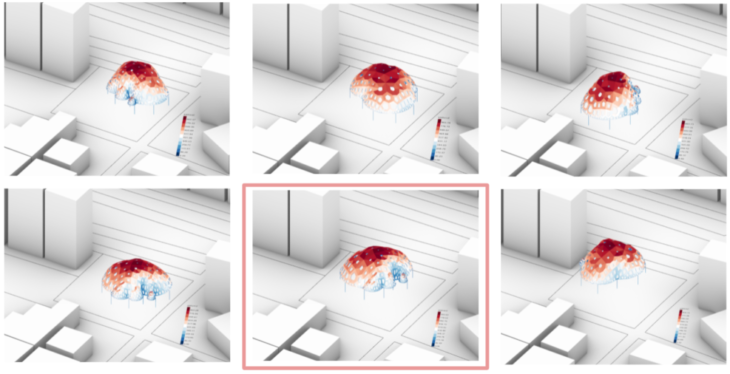INTRODUCTION
Hot Wheels is a project based in Abu Dhabi, focusing on minimizing the heat gains from the sun for open air parking lots. The design parameters were created based on the study of climatic conditions through Lady Bug environmental assessments, optimized by using Galapagos and panelized with NGon tools for fabrication.
CONTEXT
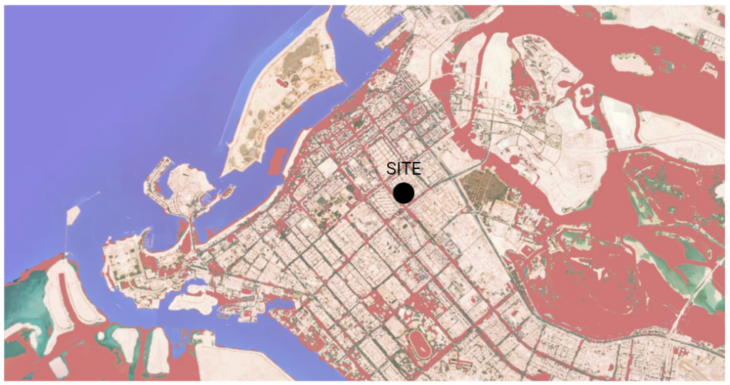
The United Arab Emirates (UAE) and the capital Abu Dhabi has a desert climate, characterized by pleasantly mild winters and very hot, sunny summers, with the humidity of the Persian Gulf that makes the heat unbearable.
ENVIRONMENTAL ASSESSMENT
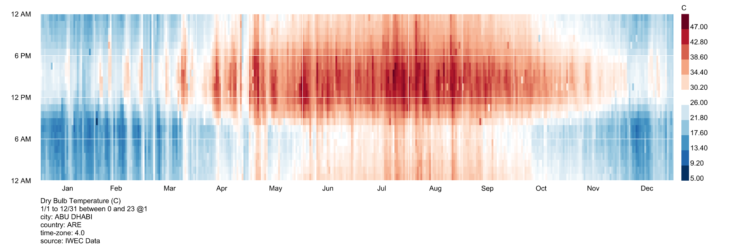
Abu Dhabi is by the vast sand desert called Rub al-Khali, which is almost uninhabited. The daily average temperature ranges from 18 degrees Celsius in January to around 35 °C in August.

August is the hottest month in Abu Dhabi with an average temperature of 35.5°C and the coldest is January at 18°C with the most daily sunshine hours at 13 in June. The best month to visit Abu Dhabi is best time to visit Abu Dhabi is between April and May or from September to October.
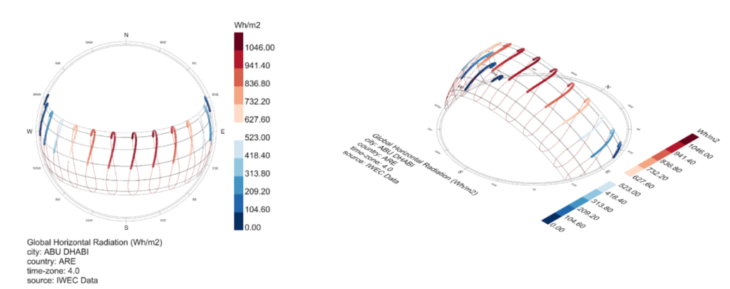
The sun path was studied for the months of May to August, the hottest months of the city. The aim of the design intervention is to minimize the solar radiation gained by the site. The orientation of the structure must optimized to reduce its heat gain.
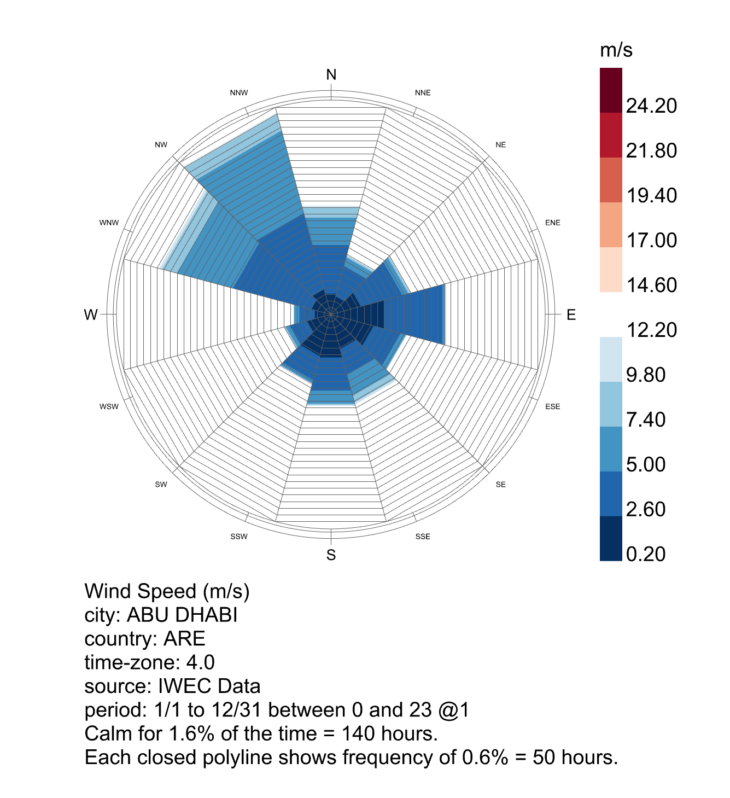
To address ventilation needs, wind analysis was carried out on Lady Bug and the analysis showed the prevalent winds are from NW direction.
PSEUDOCODE
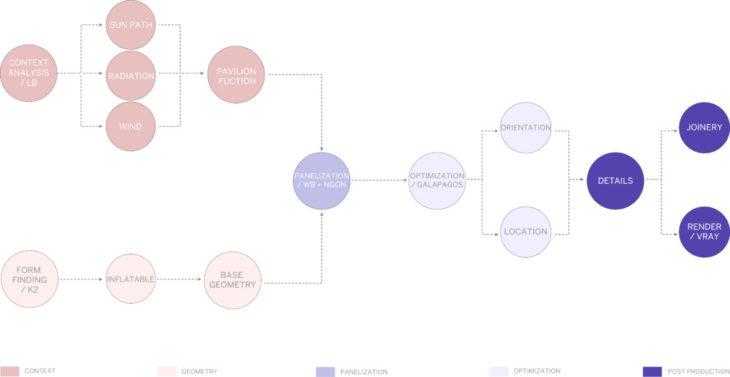
Psudocode showing the process of analysis, design, optimization and details.
FORM FINDING
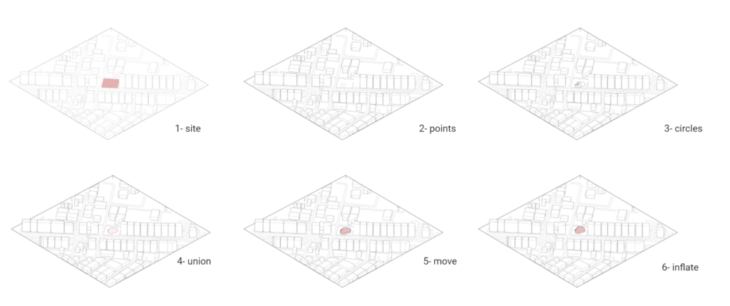
In order to create the form, random set of points were generated through grasshopper, provided points were chosen as the center points of circles. Boundary union was implemented on the overlapping circles. Boundary curve was moved in the z axis to create an opening for the cars. Boundary curve is inflated with Kangaroo 2 solver to get the optimal structure.
PANELIZATION
Varying sizes of panels were created according to the direct sun hours visualization provided by Lady Bug analysis. On top of that information, attractor curve was applied to minimize the heat gains. Panelization strategy was implemented to fabricate the geometry, numerical tags were added to aid the fabrication process.
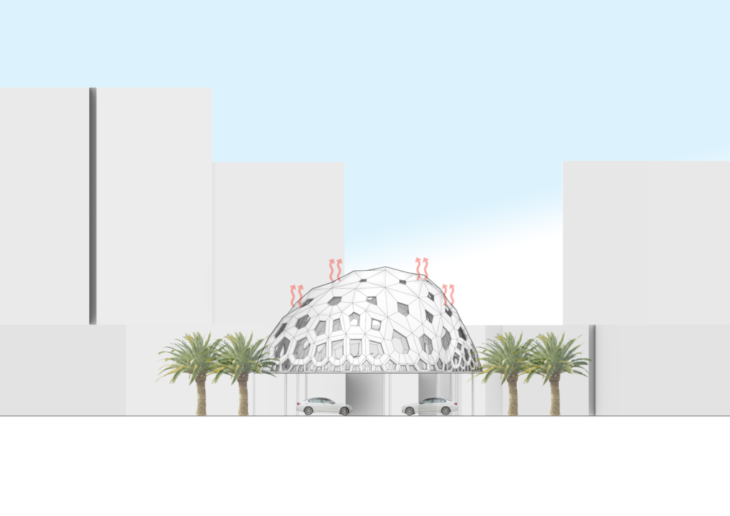 With the varying openings mentioned above heat relief was also achieved.
With the varying openings mentioned above heat relief was also achieved.
OPTIMIZATION
Orientation optimization was implemented by Galapagos to reduce the heat gains. Most optimum orientation was indicated by red line above.
RENDERS
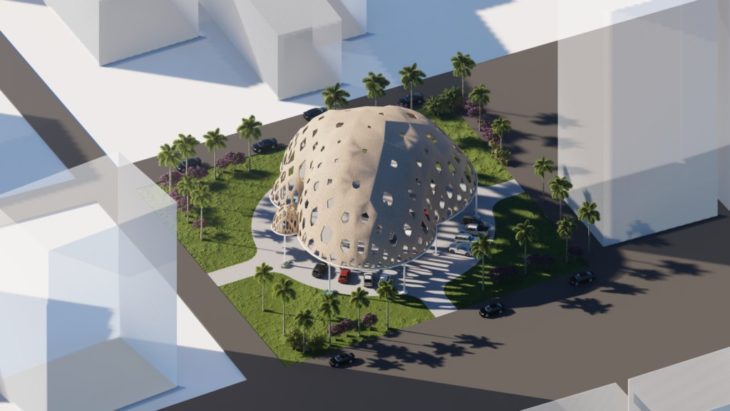
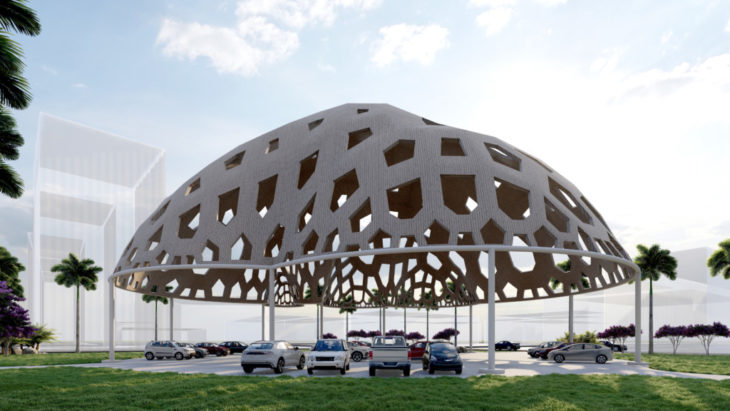
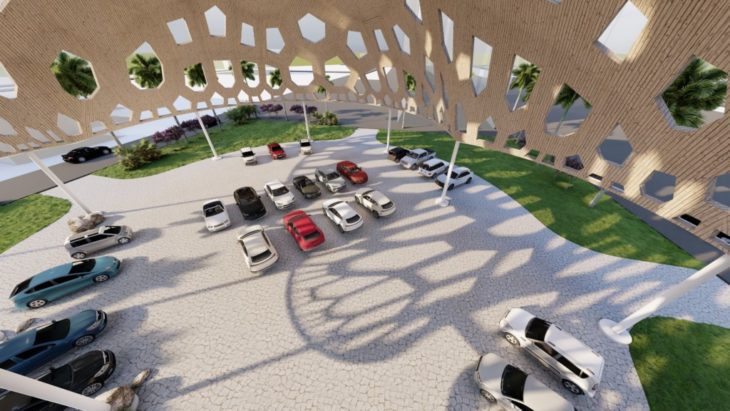
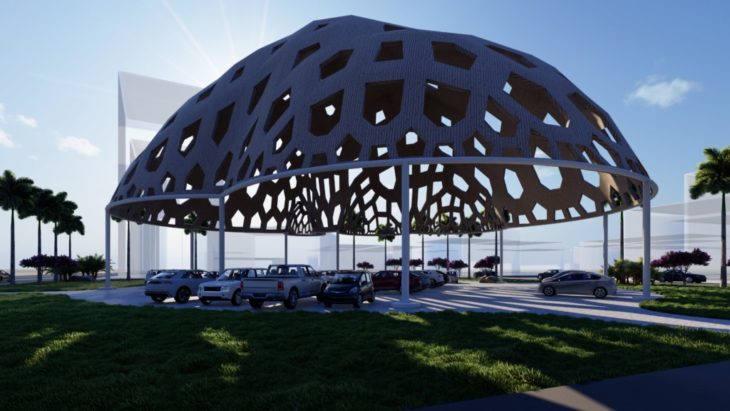
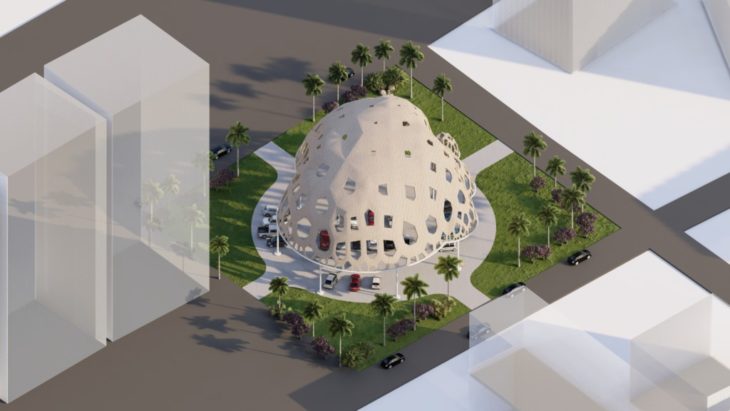
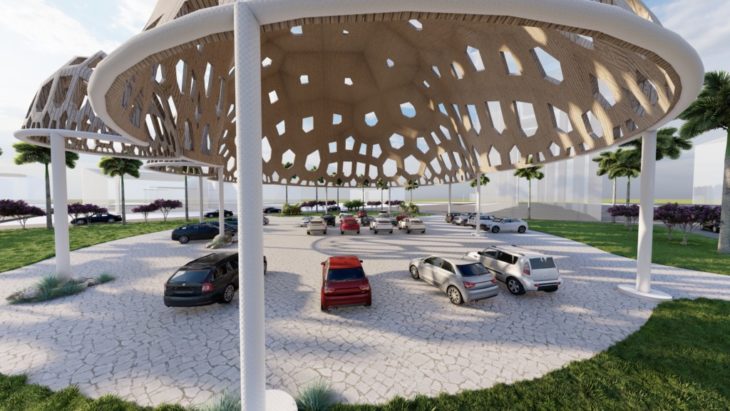
‘Hot Wheels’ is a project of IAAC, Institute for Advanced Architecture of Catalonia developed at Master in Advanced Architecture in 2022 by Students: Aleyna Gültekin, Arunima Kalra, Neha Jayanth Pattanshetti, Paragati Patilkurkarni and faculty: David Andres León, faculty assistant: Ashkan Foroughi.
